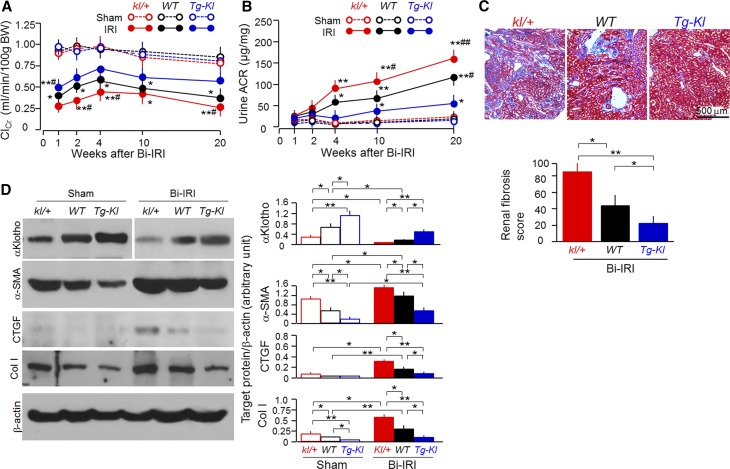Figure 5.
αKlotho-deficient mice have more rapid progression to CKD after AKI. Mice with three different levels of αKlotho (low, kl/+; normal, WT; high, Tg-Kl) at 3 months old underwent Bi-IRI and were fed normal rodent chow for 20 weeks. (A) ClCr. BW, body weight. (B) Urine ACR. Data are expressed as means±SDs of at least four mice from each group, and statistical significance was assessed by one-way ANOVA followed by Newman–Keuls test, and accepted when *P<0.05; **P<0.01 versus vehicle at same age; #P<0.05; ##P<0.01 versus IRI Tg-Kl mice. (C) Renal fibrosis at 20 weeks. (Upper panel) Representative micrographs of Trichrome staining of kidney sections from four animals of each group. (Lower panel) Summary of renal fibrosis scores obtained from Trichrome-stained sections with ImageJ. (D) Levels of αKlotho and fibrotic markers in the kidney. (Left panel) Representative immunoblots for αKlotho, α-SMA, CTGF, Col I, and β-actin protein. (Right panel) Summary of immunoblots. Data are expressed as means±SDs of four mice from each group, and statistical significance was assessed by one-way ANOVA followed by Newman–Keuls test, and accepted when *P<0.05; **P<0.01 between two groups.

